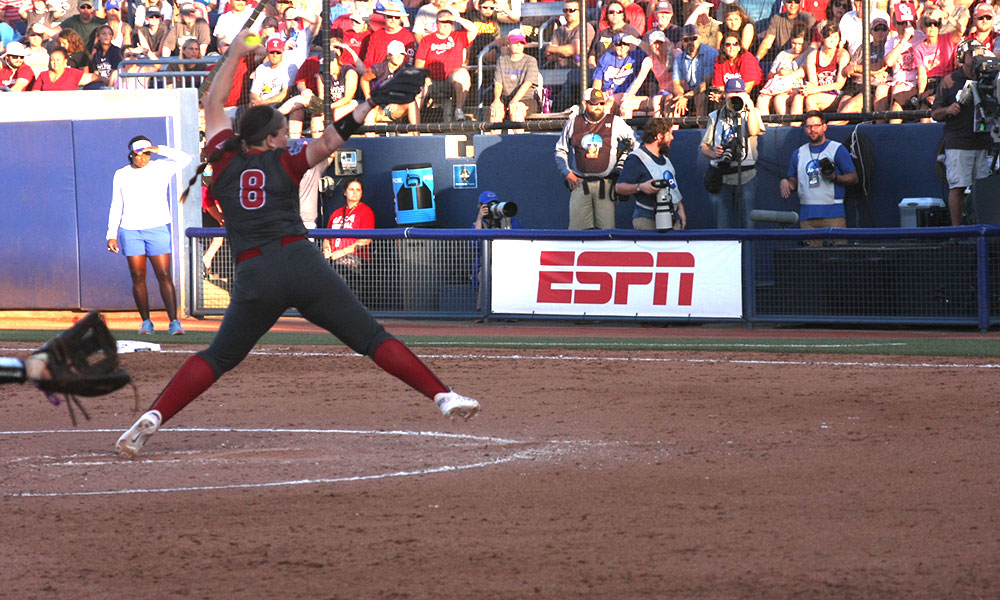Radar Gun Syndrome is Common in Softball

Being diagnosed with Radar Gun Syndrome in softball is a pitchers’ worst nightmare. Radar guns are used to determine how fast a pitcher throws each pitch. How accurate and consistent are radar guns? There are many different types of Radar Guns used in tracking a softball pitcher’s speed. It really depends on the brand and how much the owner is willing to spend on the product. Inaccuracy when using a Radar Gun could be caused by where the gun is positioned when tracking the pitch speed. As a pitching coach and someone who uses radar guns frequently, I have found success by standing directly behind the catcher or right behind the pitcher, by crouching down and holding the gun at the height of the pitch. Hold down on the button right before the pitcher releases the ball, or set the gun to Constant mode. On this setting, all you have to do is hold up the gun and it will automatically track each pitch.
Radar gun syndrome occurs when a pitcher tenses up and tries to throw the ball hard when she knows her speed is being clocked. The speed will be significantly slower on the pitches that are being tracked by the radar gun. This is extremely normal. Remind the pitcher that speed comes from speeding up the arm, getting into the legs, and driving towards the catcher to cut the pitching distance down. If a pitcher tries to throw hard, she won’t. Keep the pitcher calm and remind her that speed can’t happen under pressure. Stay loose and let it rip!
It is important for softball pitchers to know their pitching speed. Most pitchers have no idea how hard they are throwing and are only exposed to radar guns in tryouts – where they aren’t told their speed. Knowing your pitching speed is important for a few reasons. First, it helps with goal setting. Having a starting point is important and setting a goal to throw harder by the time the next season begins will push pitchers in the off-season months. It is also important to know the speed of pitches, especially change ups. The speed window for a great change up in softball is going to be an eight to 12 mph difference from the fastball.
One final thing to note is that pitching speed does not define a pitcher. Pitchers come in all different shapes and sizes. The ones who find the most success in our game are the ones who can move the ball around the plate hitting locations, and those who have a devastating change up. There are only a handful of “flame throwing” pitchers in our game, and if those pitchers can’t hit spots they give up hits. With bat technologies today, hitters are taught to shorten up and make contact. The velocity from the hard throwing pitcher will take care of the rest. If you find yourself a victim of radar gun syndrome, practice with someone gunning your pitches from time to time. The only way to get over a fear is to tackle it head on and beat it yourself.







